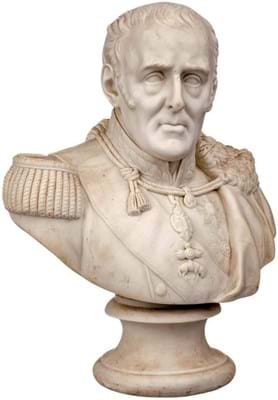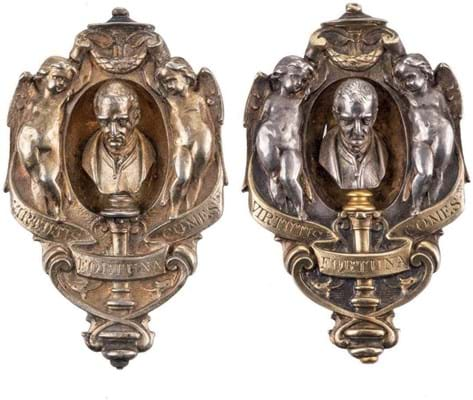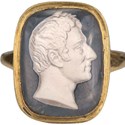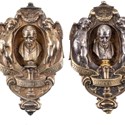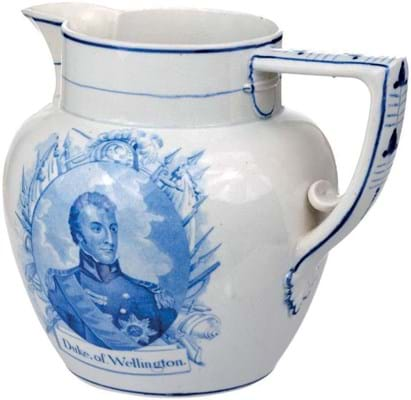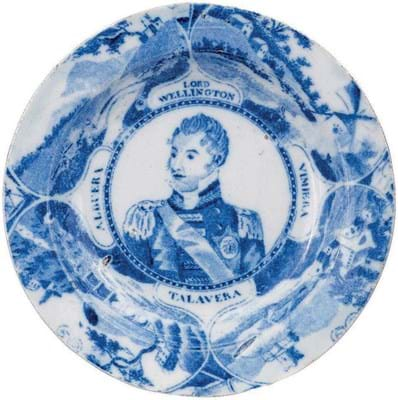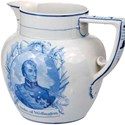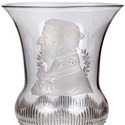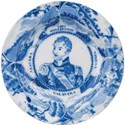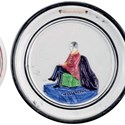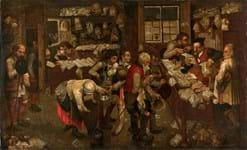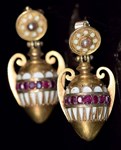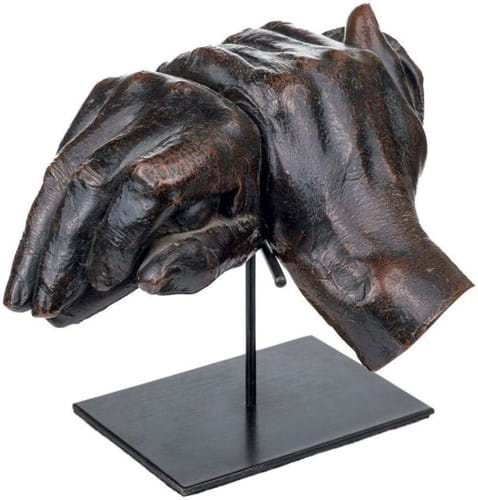
Hands of His Father, a patinated copper sculpture by Baron Marochetti (1805-67) inscribed Presented to RGH by HG The Duke of Wellington, 8in (20cm), £4000 at Dominic Winter.
Commemoratives relating to the Anglo-Irish soldier and politician Arthur Wellesley, the Duke of Wellington (1769-1852), catered to two main periods of Wellington-mania.
The first emerged during the Peninsular War and particularly after the final victory over Napoleon in 1815. The second followed Wellington’s death in 1852 when he was awarded a state funeral.
In between was the era of the ‘Iron Duke’ (a nickname acquired in Westminster rather than on the battlefield) when the hero of Waterloo withstood a high degree of personal and political unpopularity as the Tory statesman and prime minister who passed the Catholic Relief Act (1829) but opposed the Reform Bill (1832).
A fine collection of Duke of Wellington memorabilia from the early, mid and late 19th century was sold by Dominic Winter (20% buyer’s premium) in South Cerney, Gloucestershire, on March 9. Numbering more than 80 pieces and offered in 43 lots, it had been assembled by a gentleman who was buying both at auction and through the trade until quite recently. More pieces from the collection will be offered in a future sale.
Hand of His Father
Few of these items were of a particularly personal nature, save perhaps a small copper alloy sculpture by Carlo Marochetti (1805-67).
Measuring 8in (20cm), it was formed as one hand resting on the other, one end engraved Hands of His Father, The Great Duke Modelled by Baton Marochetti, the other Presented to RGH by HG The Duke of Wellington.
Marochetti completed several sculptures of Wellington, including the equestrian statue in Royal Exchange Square, Glasgow (the one that is frequently adorned by revellers with a traffic cone hat) and a standing figure now sited at Woodhouse Moor, Leeds.
He appears to have modelled Wellington’s hands in this distinctive crossed arrangement while the duke was sitting for a portrait.
Only a ‘handful’ of casts are known: another two are in the Royal Collection and the National Army Museum. The inscription to the present example implies it had been owned by Wellington’s son Arthur Richard Wellesley (1807-84).
Estimated at £300-400, it sold at £4000, the highest price of the collection.
Typical bronzes
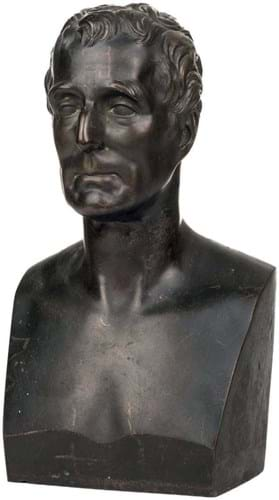
Regency bronze half bust of Wellington by George Gammon Adams (1821-98) signed to the rear GG Adams.SC Published Janry 10th 1833, 12in (30cm) high, £1900 at Dominic Winter.
More typical furnishing bronzes included a Regency bronze half bust of Wellington by George Gammon Adams (1821-98) dated 1833 (£1900) and an equestrian figure of Wellington on his favourite horse Copenhagen by Edmund Cotterill (1794-1860) inscribed Published as the act directs by R Garrard. Panton St London, 18th June 1837 (£3800).
This latter model was originally designed in silver and displayed on the sideboard at Wellington’s London residence, Apsley House.
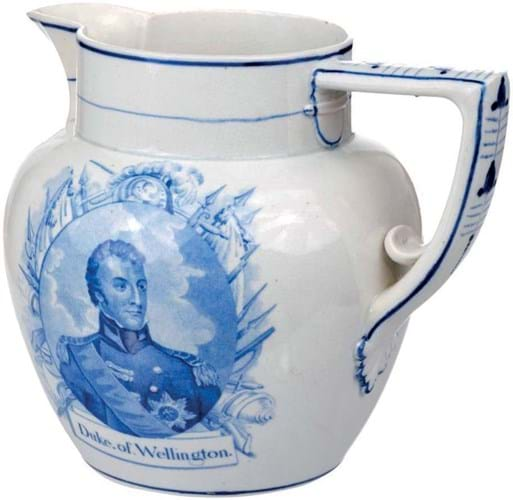
George III pearlware puzzle jug, c.1815, printed in blue with a portrait of Wellington to one side and an inverted portrait of Napoleon Bonaparte to the other, spout restored, 6in (16cm) high, £150 at Dominic Winter.
In number, ceramics dominated. These were mainly cheap and cheerful pearlwares and stonewares sold in group lots that, in what is not an early market, made modest sums of under £200 each.
A rare blue and white transferware plate, c.1811, printed with a head and shoulders portrait of Lord Wellington and the names of three battles from the Peninsular campaign (Vimiera, Talavera and Albuera) sold at £150.
It had been bought in September 2021 for £300 as part of the Robert Simpson collection sold by Woolley & Wallis and Historical & Collectable.
More eagerly contested was a 5 x 4in (13 x 11cm porcelain plaque by Copeland & Spode, c.1812-14, painted with a portrait inscribed in red to verso Marquis Wellington from an original painting in the possession of [his mother] the Countess of Mornington. It took £650 (estimate £200-300).
A particularly fine example of Regency cut glass, a vase commemorating the Battle of Waterloo with an engraved portrait bust of Wellington facing left and the motto La Belle Alliance 18 June 1815, made £520 (estimate £100-200).
Items such as this have obvious crossover collecting appeal.
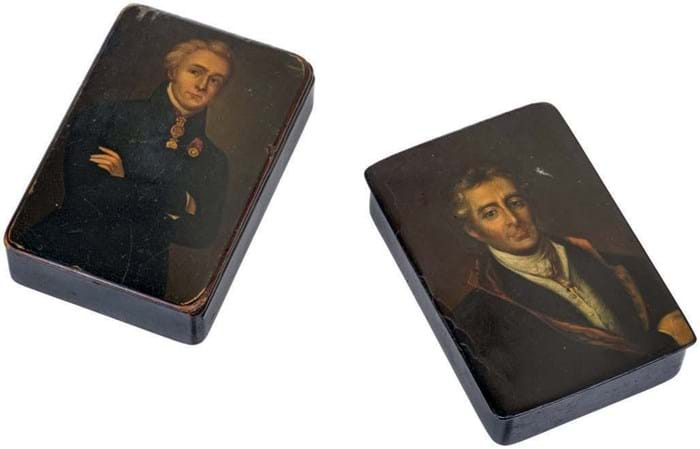
Two lacquered papier maché snuff boxes, c.1820, each painted with a portrait of Wellington, one signed by Stobwasser, £2100 at Dominic Winter.
Sold at £2100 (estimate £100-150) was a lot comprising two lacquered papier-mâché snuff boxes, c.1820, each painted with a portrait of Wellington.
One of these was signed inside with a distinctive red script Stobwasser sehe, Fabrik in Braunschweig and numbered 8282 for the famous ‘lacquerware manufactory’ founded by Georg Siegmund Stobwasser in Brunswick in 1763.
These boxes are much imitated but the best examples, decorated by a succession of talented German artists who learnt their trade at the Stobwasser painting school, can command five-figure sums.


